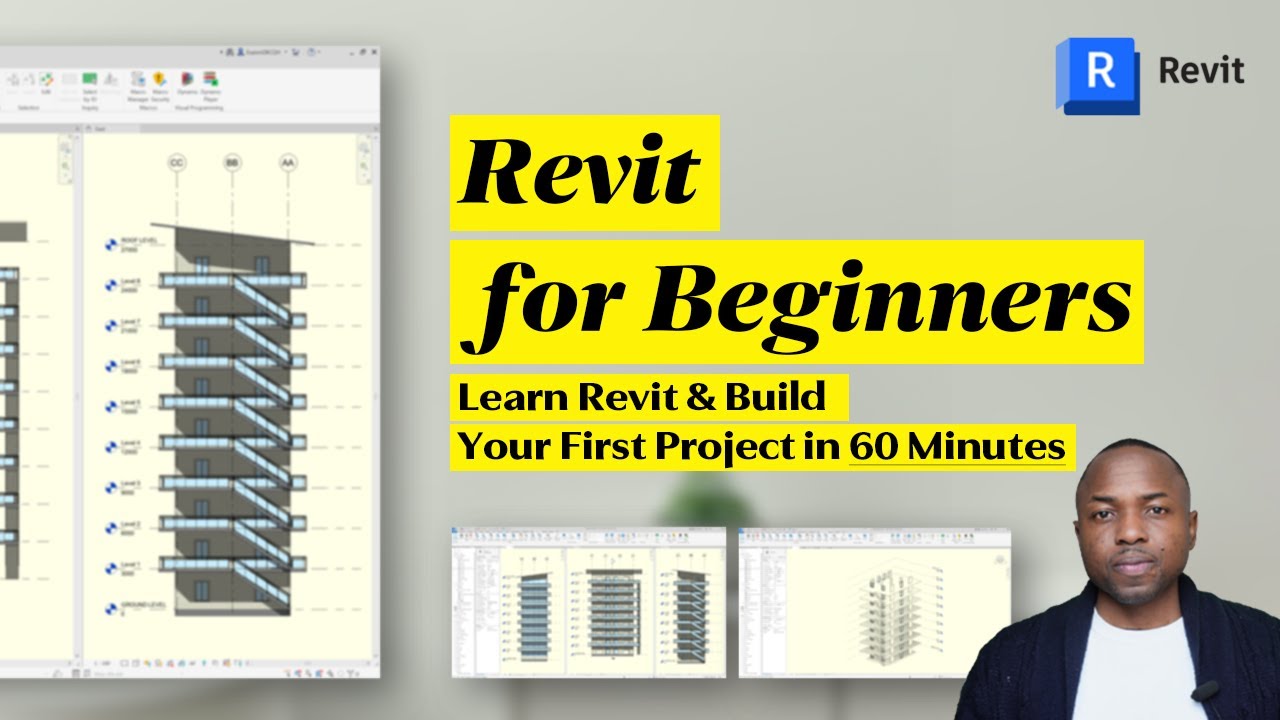
Since its initial release, Autodesk Revit remains a remarkable tool that’s been transforming how we create information-rich 3D models for construction planning and building development. If you’re new to Revit, my friend, Femi Osewa, shares an elaborate Revit for Beginners tutorial to help you get started, following his numerous years of experience in Revit modelling.
Before you watch the video, I’ll briefly run through some key things you should know about Revit.
First,
Why Revit for Beginners?
Autodesk Revit is a popular yet complex Building Information Modeling (BIM) software in the architecture, engineering, and construction fields. Unlike traditional CAD software, Revit generates a complete virtual model of a building, including all components and systems.
Revit represents building elements using parametric components known as “families,” allowing you to create detailed 3D models with geometric and non-geometric information. This Revit for Beginners video tutorial breaks down the complexity of the software so you’ll know how everything works.

Image Source: Autodesk
Revit operates on a project-centric approach, where all work takes place within a single project file representing the entire building model. The software offers various 2D and 3D views of the model, which you can organize into sheets for documentation and sharing.
One notable feature of Revit is its ability to mimic real-life building elements. Using Revit, you can access smart automatic calculations that allow you to create accurate renders and avoid possible human errors.
Finally, Revit also supports multi-user collaboration, so team members can simultaneously work on different parts of the same model.
Getting Started with Revit
The basic Revit Workflow includes setting up your project, building your 3D model, and then adding dimensions, texts, and other annotations to the model. Next is the documentation process where you create 2D drawings, plans, and sections from the 3D model. Finally, you generate renderings and visualizations.
Yes, “Revit for Beginners” that looks easy, right? However, you should know that Revit has a steep learning curve. So, it’ll require time and practice to master. The platform can also be quite demanding on computer resources, especially for large, complex projects. So, if you’re just getting started or looking to brush up on your skills, learn from the BIM expert himself. Femi Osewa’s Revit for Beginners tutorial will get you working like a pro.
In this tutorial, you’ll get well acquainted with the interface. You’ll also learn how to:
- Navigate the Revit Workspace
- Build your first project from the ground up
- Create basic elements like walls and roofs
- View and modify existing elements
- Create sections and elevations
- Customize the Revit interface for more efficiency
- Trim, extend, align, copy, paste, create railings, and adjust roof slopes.
- Run 3D navigation in Revit, and a lot more.
Watch the Revit for Beginners video Tutorial below
You may also want to read about how to adopt the latest technology for architecture, engineering, and construction.
Key integrations you’ll find in Revit
Revit can import several file formats as links, for example, DWG files from AutoCAD, NWD files from Navisworks for coordination, etc. Other popular integrations are:
- Civil 3D – enables the coordination of building and infrastructure design, facilitating the exchange of data between architectural and civil engineering teams.
- Navisworks – Revit can export files to Navisworks to aid in clash detection, simulation, and visualization of the entire project, helping to identify and resolve potential issues early in the design process.
- 3ds Max – Revit exports 3D models to 3dsMax to facilitate the creation of high-quality renderings and animations for architectural visualization.
- Enscape, Lumion, and V-Ray – are great plugins for generating high-quality rendering and visualizations of your 3D model.
Revit also integrates seamlessly with Autodesk Construction Cloud, making team collaboration easier.
